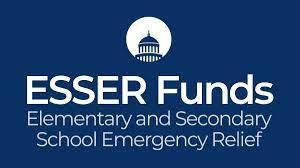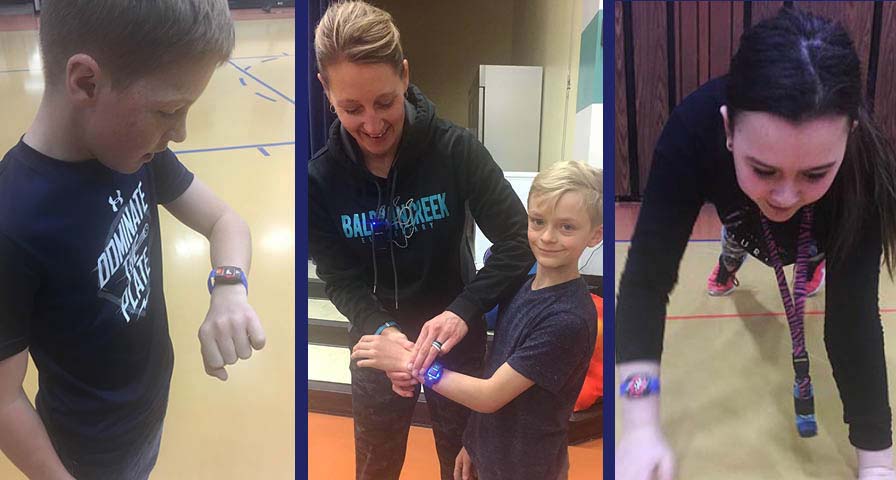The largest pool of available funding to purchase IHT ZONE heart rate monitors for your student physical and emotional wellness program comes from the U.S. Department of Education. The most significant amounts of federal funding for each local school district falls into one of three grants:
- ESSA – the Every Student Succeeds Act
- ESSER – the Elementary and Secondary School Emergency Recovery Act
- GEER – the Governor’s Emergency Education Relief fund
Understanding the Different Federal Funding Options
During a webinar sponsored by SmartBrief, Kecia Ray, president of K20 Connect, said that much of the latest round of GEER funding — $42.6 billion – still awaits allocation.
“Almost 80% remains unspent and undesignated,” Ray said. “That’s the big pot of money that (elected officials are) looking at to see how districts and states are going to use that money.”
While much of the early focus on federal funding has centered on ESSA and ESSER funds, asking for GEER funding may prove fruitful. GEER funding is designated for local education agencies that “have been most significantly impacted by coronavirus.” Governors can also award funding to schools for “carrying out emergency educational services, providing childcare and early childhood education, providing social and emotional support, and protecting education-related jobs.”
Schools utilize IHT ZONE heart rate monitors in physical education classes, Social-Emotional Learning programs and to promote movement and academic development in STEM classrooms.
Between GEER, ESSER and ESSA, local schools have access to nearly $200 billion for the 2022-23 school year.
“This is the most money we’ve seen in a very long time that is dedicated solely to education,” Ray said.
 The latest round of ESSER funding – part of the American Rescue Plan – provides funding that must be used by Sept. 30, 2024. ESSER III added $120 billion to previous ESSER allocations totaling nearly $70 billion. ESSER I (Sept. 30, 2022) and ESSER II (Sept. 30, 2023) have fast-approaching spend-by dates and those funds are likely to be spent and/or allocated already. So, experts advise, focus on ESSER III when making requests for federal funding.
The latest round of ESSER funding – part of the American Rescue Plan – provides funding that must be used by Sept. 30, 2024. ESSER III added $120 billion to previous ESSER allocations totaling nearly $70 billion. ESSER I (Sept. 30, 2022) and ESSER II (Sept. 30, 2023) have fast-approaching spend-by dates and those funds are likely to be spent and/or allocated already. So, experts advise, focus on ESSER III when making requests for federal funding.
“When they tell you that the funds are already spent or already allocated, they might not be talking about all three rounds of ESSER,” Arizona Department of Education Title IV-A Safe, Healthy, and Active Students Specialist Keri Schoeff said. “ESSER III was a really big chunk of money so there may be some out there even if you are originally told it’s not.”
While funding criteria hasn’t changed – programs eligible for funding under ESSER I and II remain eligible under ESSER III — administrators are allocating more ESSER funding toward programs that address student mental and emotional health.
“The mental effect (of the pandemic and remote learning) is much more pronounced than the physical effect,” East Chambers ISD (Texas) Superintendent Scott Campbell said during the SmartBrief webinar.
While GEER and ESSER have spend-by dates, Ray recommends focusing on ESSA funding, which renews annually. For 2022-23, the three biggest portions of ESSA funding have all increased from 2021-22:
- Title I includes $17.5 billion
- Title 2A includes $2.2 billion
- Title 4A includes $1.28 billion
Title I schools can receive funding designated for “improving basic programs.” Schools can use Title 2 funding for “preparing, training and recruiting high-quality teachers, principals or other school leaders.” Title IV, Part A includes funding for “Student Support and Academic Enrichment Grants,” also known as Safe and Healthy Schools. Many teachers have won funding from their district’s Title IV, Part A allocation to purchase IHT ZONE heart rate monitors.
“These are traditional flow-through grants,” Ray said. “This is what schools would traditionally have access to, and the amount is still going up.”
“It’s the game-changing grant for us,” Schoeff said. “It has three elements: a well-rounded education, safe and healthy students, and effective use of technology. Physical education falls into all three of those areas.”
Health and physical education are included on the list of 17 subjects that comprise a student’s well-rounded education.
“Because a well-rounded education is a student’s civil right, if our schools are not providing health and physical education, we are actually violating our students’ civil rights,” Schoef said. “One of our talking points when seeking Title IV-A funding is to support health and physical education programs because they are guaranteed civil rights for our students.”
Creating a Successful Federal Funding Proposal
After identifying a funding source, two more steps become essential. First, teachers should make contact with their district’s funding director. Networking, especially in larger school districts, can increase the odds that a proposal is accepted.
“It is critical to build an individual relationship in the special programs or title funding departments,” Humble Independent School District Coordinator of PE/Wellness Helen Wagner said. “Know who they are, introduce yourself, and explain your program. Some districts are big, and it means a lot to make that connection. They may not know who you are at first.”
Along with the connection, use essential data to build a proposal demonstrating how the IHT ZONE heart rate monitors or IHT Assessments Software will improve your program.
“The need has to be real,” Health and PE Teacher and advocate Dr. Kymm Ballard said. “You have to be able to show it. You have to have something that backs up why you need that amount (of money). If you can’t get more time in class, you’re asking for what you can use to maximize the time that you do have.”
Cite the benefits to students (objective assessment complete with real-time feedback that’s easy to understand) and teachers (ability to objectively assess each student and generate individual, group and grade reports as needed for administrators).
“’I’m telling you what I think will best benefit the students and their overall health and fitness and why I am seeking funding for this,” Ballard said she tells decision-makers. “’Trust the data and make the investment in the students. Let’s make a difference in these students’ lives.’”
If possible, detail how your proposal fits with your campus or district improvement plan.
“That’s where a lot of the money goes, and if you’re working with your school improvement team, you’re working on the bigger picture,” Ballard said.
Don’t Let ‘No’ Be a Final Answer
Even proposals that teachers feel check all the important boxes go unfunded. Ballard said teachers should not be discouraged, nor should they let “no” be the final answer. Ask for advice in a way that makes the decision-maker a part of the solution.
“If they say no, ask them if they can give you a plan,” Ballard said. “Ask ‘how can we do this? When can we get these, because it’s needed?’ Put it back on the administration. ‘I can make a difference in kids’ lives…if you let me.’”


